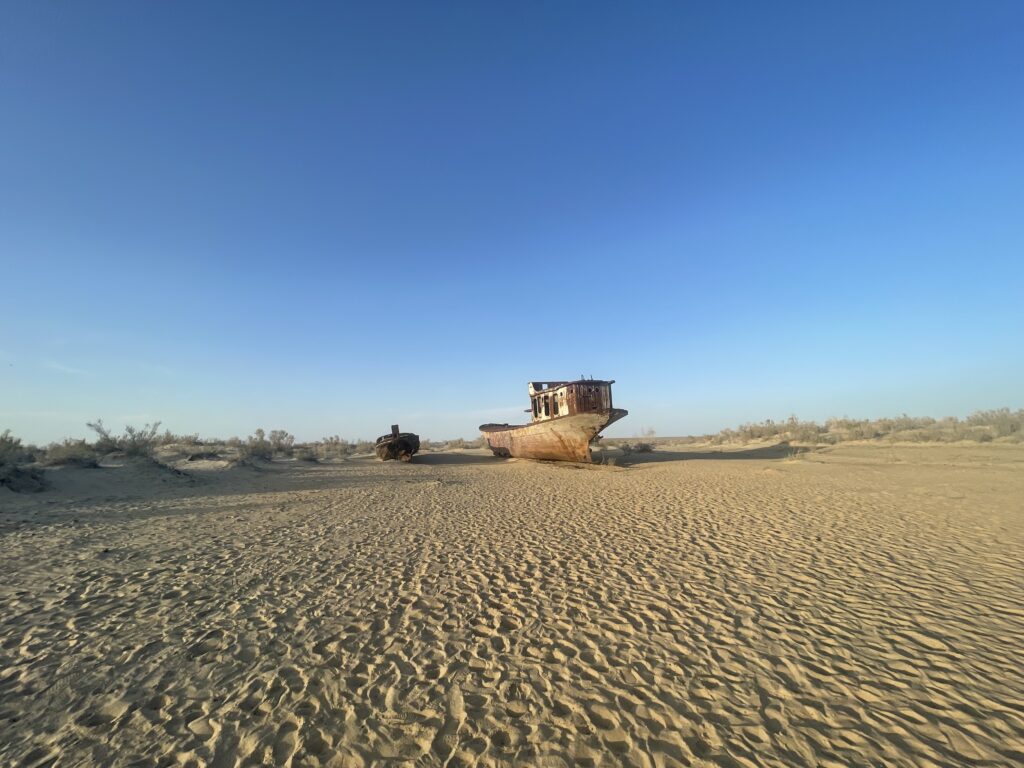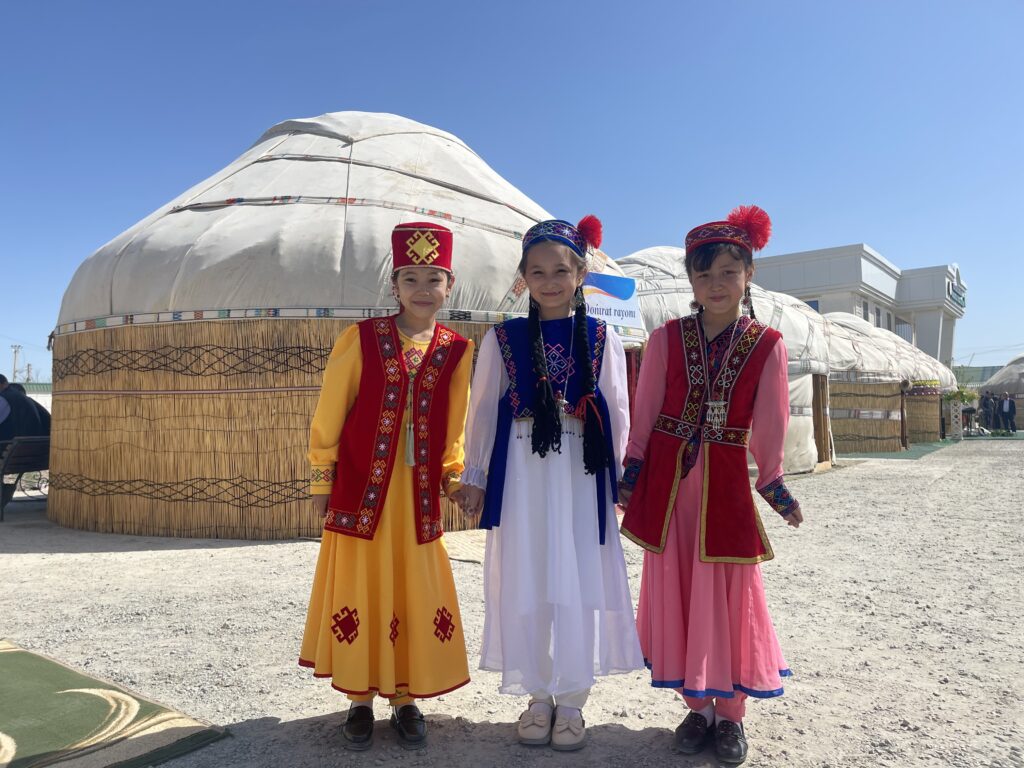One of the lesser-visited regions of Uzbekistan is Karakalpakstan, the ‘stan within a stan’, located in the north west of the country and probably the country’s most culturally distinct area.
Once a region reliant on the Aral Sea, it is now home to the world’s newest desert, the Aralkum, formed due to one of the most severe ecological disasters globally.
In this Karakalpakstan travel guide, we explore the unique attractions and activities that set this region apart.
Karakalpakstan Background Info
- Karakalpakstan is the largest region of Uzbekistan. Covering an area of 167,000 km2, it’s roughly half the size as Germany.
- It’s a very remote region, surrounded by the Karakum, Kyzylkum, and Aralkum deserts.
- The Karakalpak people are a Central Asian Turkic ethnic group who settled around the 18th century south of the Aral Sea and have their own republic within Uzbekistan’s borders, with significant political representation and autonomy.
- The word ‘Karakalpak’ means ‘black hats’, referring to the traditional headwear worn by the local population.
- The official language of Uzbekistan is Uzbek, but in Karakalpakstan, Karakalpak is also an officially recognized language—the only other language given official status in the country.
- The majority of Karakalpaks are Muslim but Zoroastrianism, one of the world’s oldest religions, used to be practiced here prior to the arrival of Islam in the 8th century.
Places to Visit in Karakalpakstan
Nukus
Nukus serves as the capital city of the Republic of Karakalpakstan. Despite its modest reputation as a tourist destination, it boasts several outstanding museums, most notably the Nukus Museum of Art.
Better known as the Savitsky Art Museum, it owes its name to its founder, Igor Savitsky. Originally from Ukraine, Savitsky was both an artist and an art collector who stashed away a large collection of artwork, banned by the Soviets for not conforming to their ideals.
It’s also home to a couple of lesser-visited but equally intriguing museums. The Museum of Regional Studies showcases all kinds of cultural artifacts, from traditional Karakalpak clothing and jewelry to artwork and portraits of local heroes.
The Berdakh Museum pays homage to the local poet and philosopher Berdakh. While its content may be sparse, a visit is worthwhile solely for its remarkable architecture. The building boasts an unusual shape, resembling Tashkent’s State Museum of the Temurids, albeit with a vertical blue and white striped dome. The view of the ceiling of the dome from the second floor is also a sight not to be missed.
Muynak and the Ship Graveyard
Muynak is a small town in northern Karakalpakstan and serves as the gateway to the Aral Sea from Uzbekistan. It is most famous for its ship graveyard, a hauntingly beautiful and somber sight featuring rusted, abandoned fishing vessels that once lined its port, now sitting at the edge of a vast desert.

Tourists are free to explore these deteriorating boats and even climb aboard them for selfies. There is also a lighthouse which now serves as a cafe, selling coffee, tea, beer and snacks, which you can climb for a better view of this poignant landscape.
During my visit to Muynak, I had the pleasure of meeting members from the ProRun running club, with whom I’ll be partnering to promote their 2024 Aral Sea Marathon.
This article is currently unfinished but will be finished when I get back to Tashkent.
In the meantime you can read more about travel to Muynak here.
